The Ultimate Guide To Winning Content Marketing Funnel For Marketers
4 mins | 04 Jan 2024
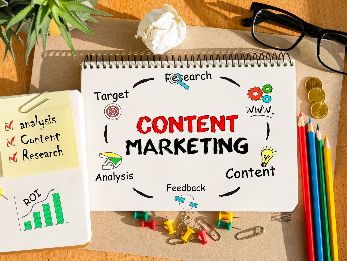
If you can pull off content marketing strategies like a pro, then it calls for the utilization of the content marketing funnel! It is a systematic yet effective approach towards the creation of content, lead nurturing, and converting those into sales.
The content marketing funnel mainly focuses on the requirements and expectations of your potential customers regardless of their position in the overall process. From making your potential leads learn about your brands and their offerings to retaining your customers, the content marketing funnel demands creating a successful content strategy that easily reaches your target audience.
Coming up with effective and engaging content is a procedure that is evolving day by day. It doesn't matter if you own a small business, are a part of a startup, or are a part of the content marketing team in a huge enterprise, knowing the power of a robust content marketing strategy is crucial for the growth of your business.
Content funnel marketing takes you through your customer journey, and also provides informative content through different mediums like social media posts, blogs, or customer stories. You have complete control over the things that your potential customers learn about your brand and have the capability to nurture your customer’s journey when you are able to understand the essential elements of the content marketing funnel!
The content that you share on your social media platforms is specifically designed to attract a wider range of audience with the motive of boosting sales. The top-of-funnel content will enable your potential buyers to know about your brand. Creating in-depth can be utilized to nurture leads, and share thoughts related to why customers should opt for your business.
Creating content for social media is powerful and once you have got your hands on a strategic marketing plan that is followed by a content marketing funnel, you can start witnessing the transition & growth it brings to your business! Keep reading below to learn about the content marketing funnel in detail, its three main stages, and how to create one!
What Is Meant By A Content Marketing Funnel?
A content marketing funnel is defined as a strategy that has the objective of providing informative, entertaining, and relevant content to your target audience as well as potential customers based on their behavior. A content marketing funnel has three different stages and is specifically designed to attract people, educate them about your brand & the products or services it has to offer, convert them into paying customers, and lastly, retain them for a longer period of time. It is an amazing way to stay organized at all times and reach your target audience.
Here are a few important things that you must know about content marketing & why it's so important:
- A study depicted that approx. 75% of companies use content marketing strategy as their primary tool because it helps in boosting the number of quality leads.
- 76% of marketers have said that they focus on creating content that is intended towards the bottom of the content marketing funnel, where a good number of people convert into sales.
- Almost 93% of the marketers make use of content marketing strategies.
- 54% of marketers say that content is the most crucial aspect of their SEO strategies.
- 70% of online users prefer learning about a particular company through blog posts or articles and no ads.
The Three Pillars Of Content Marketing That You Must Know
It is difficult for any content marketing funnel to succeed without these three pillars — Content Creation, Search Engine Optimization, and Social Media Marketing! You need to keep these three things in mind as you make content plans and develop your content marketing funnel strategy. Let's check them out in detail:
➤ Content Creation — A comprehensive content strategy is incomplete without incorporating videos, podcasts, webinars, testimonials, customer stories, and blog content. It is essential to consistently create valuable as well as relevant content to engage your customers; otherwise, you risk fading into obscurity in the digital space. While customer loyalty exists, it is not absolute.
Consider developing a holistic content plan for the upcoming six months! Identify what information your customers seek and specify how you can meet those needs. Explore options such as crafting blogs or producing insightful guides that focus on your industry. Always remember that the fundamental objective of content marketing is to inform, connect, and engage your audience.
➤ Search Engine Optimization — We haven't gone deep into the topic of SEO in this guide, nevertheless, it plays a crucial role in ensuring your content receives visibility. When a potential customer searches for a query, such as "What is the best milk frother," it is essential for your blog content to rank on search engines like Google for them to find it!
SEO involves incorporating relevant keywords, creating engaging content, using images, and crafting compelling titles. Essentially, it is a method of writing and formatting content to optimize its visibility, as increased visibility means increased chances of sales.
Given the significance of SEO, it is vital to address prevalent misinformation. Here are a few things that you must consider — always avoid keyword stuffing! Despite the advice from some SEO "experts" and software tools, loading your content with keywords does not enhance your ranking. Instead, focus on 1 or 2 keywords that have the most impact, preferably simple phrases that are used by customers in their searches.
Ensure that these keywords are included in your title and throughout the blog content. Besides, maintain the relevancy of your content. There are a few brands that often mistakenly believe that the sole purpose of SEO content is to achieve a higher ranking. In reality, the primary goal is to inform! Remember, the ultimate objective is to convert your online visitors into paying customers.
➤ Social Media Marketing — In today's digital business landscape, a strong presence on social media is essential for any enterprise. It stands as the primary platform for content promotion and the cultivation of brand recognition. Utilizing channels such as Facebook, LinkedIn, YouTube, Twitter, Medium, Instagram, and more has become necessary.
Establishing a dedicated audience for your brand is achievable by sharing engaging and educational videos or directing attention to your most recent blogs published on the website. Navigating customers through your content marketing funnel is a crucial aspect of this process.
What Are The Three Main Stages Of Content Marketing Funnel? Explained In Detail
In the main, there are three different levels of the content marketing funnel — TOFU, MOFU, and BOFU. TOFU or the top-of-funnel, is the first level of the content marketing funnel where your potential buyers learn about your business. MOFU or the middle-of-funnel, is the second stage where potential customers tend to engage with your brand and figure out why your brand can be the right choice for them. Lastly, BOFU, or the bottom-of-funnel, is the last stage where the journey of your customer is resolved and it's time to make an informed decision, which is to make a purchase.
1) Top-Of-Funnel (TOFU)
The top-of-funnel is the first stage where you focus on developing quality content that can draw in potential customers. This is one of the best ways to introduce your business to a wider range of audience and entice them to learn more about your brand. It allows you to make a solid impression by creating compelling content that is interesting, entertaining, & engaging. The main objective here is to drive more & more people to educate them about your offerings.
2) Middle-Of-Funnel (MOFU)
The middle-of-the-funnel is the second stage in the content marketing funnel where your potential customers consider your business and are interested in gaining more knowledge about it! With curiosity and excitement, they might be reading your blog posts, and customer success stories, going through your website & social media handles, and learning about your products or services. The main goal here is to make them familiar with your products & services so that they can find the perfect solution for their requirements.
3) Bottom-Of-Funnel (BOFU)
The bottom of the funnel is the last stage and here, you need to put in extra effort to persuade them to make a positive decision. This is the stage where you have to deal with your customers who are almost ready to make a purchase but are confused about the next steps. So, what can be your major goal here? Well, the main goal is to convert your potential customers into paying customers!
In addition, you need to understand that your customers may go through all the stages in the content marketing funnel within a few hours or it might also take several weeks for them to make an ultimate decision. Your work is to find out where the potential customers are in the funnel and nurture them by creating targeted content.
How To Craft Engaging Content For All The Stages Of The Content Marketing Funnel?
The content marketing strategy that you use must include different content formats and should be applied depending on the type of stage of the content marketing funnel. Remember that you must focus on creating content regularly, it should be consistent, help in boosting brand awareness, and be able to add value to your audience's life.
If you want to establish your brand as a leader in the industry then you must provide an opportunity for your customers to learn more about your business. This is said to be a methodical approach and your content should be able to easily reach your customers!
Well, here’s how you can craft compelling content for every stage:
A) Content For The Top-of-funnel (TOFU) — The content creation process for the first stage of the funnel is quite challenging because it must be attention-grabbing, engaging, and informative and must be able to persuade people to want to learn more about your brand and it's offerings. This content must be SEO-optimized and it can be in the form of articles, blog posts, guides, eBooks, checklists, quizzes, infographics, or landing pages.
Developing content at the first stage means that you need to figure out what works for attracting your audience and rank higher on search engine result pages (SERPs). You must find out the reason your customers are engaging with your brand so that you can keep running that strategy till the time it is profitable for your business.
Publishing blog posts can show your expertise in the subject matter and become the voice of your brand. Infographics are a great way to attract the eyeballs as they are captivating and take no time to digest! When it comes to paid ads, they can help in increasing traffic to your website and eBooks can provide your customers with a good peek at what they can expect from your brand.
The top-of-funnel content must be interesting because it is an opportunity to make your customers feel attracted and keep them engaged to explore further. Simplify the things that you have to offer, and make your content fascinating enough to learn more about your business.
B) Content For The Middle-of-funnel (MOFU) — MOFU content is the opportunity you get where you get to describe your company and its offerings in-depth to your customers. The content here is a mixture of long-form content as well as social media content, such as blog posts, tweets, LinkedIn posts, etc. Furthermore, it also includes case studies, how-to guides, webinars, free trials, email newsletters, or video tutorials.
Creating content like how-to guides are extremely informative and useful for your customers as they get to know that this can be the right solution to their problems. Even video tutorials are an excellent way to keep your audience engaged and an email newsletter can keep your customers updated about recent launches, discounts, or any important announcement.
Developing content for the fiddle-of-the-funnel is your opportunity to showcase that you are an expert in your industry! Try to be clear always when it comes to telling your customers why you are the best option for them. When you can display your in-depth knowledge about a particular field that can be easily remembered, your chances to convert your customers into sales will increase!
C) Content For The Bottom-of-funnel (BOFU) — Creating content for the bottom-of-funnel will help you achieve your desired outcomes for the company. Sharing case studies, successful customer stories, reviews or testimonials can help your customers to get a positive impression about your brand. These content formats are utilized to offer proven facts or evidence of how it is likely to deal with your business and what were the experiences people had previously.
Moreover, product descriptions are in-depth pieces of information that help in describing what your customers can actually expect by making a purchase from your business. The content for the last stage of the content marketing funnel is simple, straightforward, and directly parallel to sales materials that help convert your leads to paying customers.
Develop A Successful Content Marketing Funnel Today!
The content marketing funnel has different aspects that need to be considered and it involves developing an effective content plan that can fulfill the needs of your customers no matter where they are currently in the content marketing funnel.
With edge CRM, you can now stay organized in the entire process, which gives you the capability to classify your potential leads so that you can nurture your leads in whatever step they are! Keyword and content research is what drives your content, and it gives the great opportunity to make it appear on the first pages of the search engine using robust SEO strategies.
When you tend to use tools like edge CRM, you gain that extra power to make your content scheduled for a streamlined technique. Your content marketing strategy will be able to fetch more quality leads, bring those leads into the content marketing funnel, and then convey them to paying customers. You need to understand that there is a major difference between the different levels of the content marketing funnel and therefore, it can be easier for you to create the content that you require to become successful.
Your target audience or existing customers will be able to find your brand via organic search or even paid ads. If this happens, then the top-of-funnel content must be compelling enough for the customers who want to learn more about the topic. You can make your content more engaging by utilizing infographics, interactive quizzes, humor, etc.
Your content should be successful in persuading potential buyers to learn more about your brand’s products & services and then concentrate on the upcoming things! Also, you need to offer a good amount of encouragement to your buyers so that they are willing to move on to the next stage of the content marketing funnel. You must focus on creating an effective content marketing funnel and see how your business grows.
Key Takeaways
- Curate compelling top-of-funnel content to attract and engage a wider range of audience.
- Nurture leads with middle-of-funnel content that educates and builds trust.
- Convert prospects into loyal customers utilizing bottom-of-funnel content that addresses their specific needs.
- Personalize content at each & every stage to enhance the journey of your customers.
- Leverage analytics to continually optimize and refine your content marketing funnel.
- Align content with buyer personas to tailor messaging to target audiences.
- Utilize diverse content formats such as blogs, videos, or infographics for a well-rounded funnel strategy.
- Implement effective calls-to-action to guide users seamlessly through the funnel.
- Foster brand loyalty through post-purchase content, turning customers into advocates.
- Stay adaptable and responsive, adjusting content strategies based on evolving consumer behaviors.
- Integrate SEO techniques to enhance content visibility and reach in the funnel.
- Foster collaboration between marketing and sales teams for a unified approach to lead nurturing.
Author

Share
Share
Related
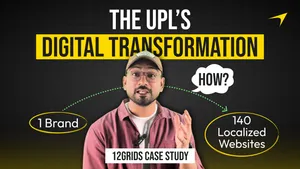
Why Understanding Local Users Was the Secret Behind UPL’s Global Digital Success
3 mins : 26 Nov 2025
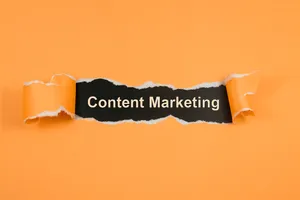
How Content Marketing Transformed Goldstab Organics’ Online Presence?
5 mins : 11 Nov 2025
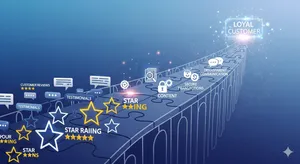
Building Trust: How Content And Ratings Turn Visitors Into Buyers
5 mins : 18 Sept 2025
Other Articles

Meeting Customers Where They Are: WhatsApp As A Sales Channel
5 mins : 17 Sept 2025
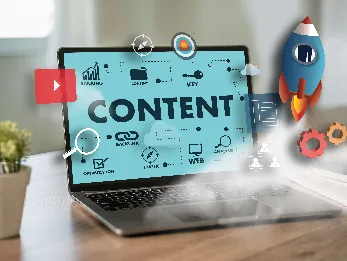
21 Content Marketing Metrics That Every Marketer Should Track
5 mins : 30 Dec 2023

What Is AI In Content Marketing? What Are Its Benefits & Challenges? Explained In Detail
6 mins : 27 Jan 2024

